#ricoh imaging
Explore tagged Tumblr posts
Text

I love the colour of Kodak ProImage 100. As far as I'm aware it isn't really a professional film, but it is very affordable. It's my go-to general purpose colour film.
Sky Edwards
2022
Ricoh XR-10
Kodak ProImage 100
SMC Pentax-M macro 1:4 50mm... probably.
#macro photography#macro#flowers#plant macro#film photography#35mm film#kodak#kodak pro image 100#ricoh#pentax#daisies#flower macro
14 notes
·
View notes
Text
RICOH выпустила Image Sync версии 2.1.15
RICOH выпустила версию 2.1.15 своего приложения... Читать дальше »
0 notes
Text








Cameras:
AF: Canon Sureshot 60mm, Olympus Superzoom 115, Vivitar Powerzoom, Minolta 130C, Ricoh AF 5, Yashica t2
MF: Canon EOS 650, Canon T70, Pentax Spotmatic
All of my photos are originals taken by me unless I give credits to someone else in my caption
None of my pictures are edited besides rotating or flipping the image. I post my edited film on my Instagram: (@antaneasha)
#film photography#35mm color film#35mm film#filmisnotdead#film#35mm#35mm camera#filmedit#canon photography#analog#fuji 400#pentax
28 notes
·
View notes
Text


Testing out the Ricoh R10. Images by Adriana Damian
#photographers on tumblr#black and white#bnwphotography#ricoh#ricohr10#artists on tumblr#vintage digital camera#point and shoot
18 notes
·
View notes
Text







80s Abstracts
The image(s) above in this post were made using an autogenerated prompt and/or have not been modified/iterated extensively. As such, they do not meet the minimum expression threshold, and are in the public domain. Prompt under the fold.
Prompts:
an artwork with pink and blue colors, in the style of neoplasticism, miniature illumination, bold graphic forms, ricoh ff-9d, young british artists (ybas), energy-filled illustrations, zigzags
music by mika wilson, in the style of bold geometric shapes, magenta and azure, miniature illumination, avant-garde experimentation, victor moscoso, pop art brightness, charles gwathmey
#abstract art#patterns#colors#80s aesthetic#unreality#midjourney v5.2#generative art#ai artwork#public domain art#public domain#free art#auto-generated prompt
9 notes
·
View notes
Text

The image captures the clean, sweeping curves of a building's rear as it leads toward Manchester Piccadilly station. The photograph, taken with a Ricoh GR3, highlights urban elegance and architectural flow against the dynamic backdrop of the sky.
#contemporarystyle#urban#places#urbanphotography#curveddesign#architecture#england#glassfacade#manchester#photography#manchestercityscape#citylife#office#ricohgr3#modernbuilding#building#elloon
8 notes
·
View notes
Text

The Leica Diaries: Street Photography by Jas Leon
Born in Los Angeles, California, Jas Leon is a Guatemalan-American photographer currently living in New York City. Her cultural background has certainly contributed to her unique perspective and approach to photography.
As a photographer, Jas Leon has a particular interest in using analogue cameras, as demonstrated by her choice of the Leica M4-P and the Ricoh Ricohflex New Dia. Analogue photography, also known as film photography, has seen a resurgence in popularity in recent years, as many photographers have rediscovered their appreciation for the tactile nature of film, the unique look it offers, and the slower, more deliberate process it enables.
The Leica M4-P is a highly regarded Leica M-series camera known for its simplicity, robustness and exceptional optical quality. The 28mm lens used by Jas offers a wide perspective, making it ideal for shooting street scenes.
New York City is a vibrant and diverse metropolis and offers photographers like Jas Leon countless opportunities to capture the street life and the unique character of the city. The Ricoh Ricohflex New Dia medium format camera with its 6x6 film format produces high-resolution images with a distinctive look, making it a suitable tool for street portrait photography.
Potential clients or photography enthusiasts can view Jas Leon's work on her website, where she displays her portfolio.
A day with NYC photographer Jas Leon (Paulie B, Walkie Talkie NYC #45, September 2024)
youtube
Monday, October 21, 2024
#streetphotography#analogphotography#mediumformat#urbanlife#interview#ai assisted writing#machine art#Youtube
7 notes
·
View notes
Text

8/9/2024 - The image you see above is a scan of a 35mm negative. It started its life as a digital JPEG from my Ricoh GR III. How can a digital photo become a 35mm negative? I did an experiment recently where I used my MacBook screen and a macro lens on my Canon film camera to transfer digital images to film. This is better than any "hOw To GeT tHe FilM lOoK" video you'll find on YouTube. Because this is not an edit, it's real!
#original photographers#original photography#newt#leaves#Ricoh griii#macro#kodak Ektar 100#35mm#film#experiment#photographers on tumblr
10 notes
·
View notes
Note
Hey Micheal what camera would you reccomend to some one starting out taking photos & what’s your set up?
Hey!
I'm a firm believer in buying an inexpensive DSLR or mirrorless setup with interchangeable lenses. You don't have to break the bank on a starter setup — just focus on buying a camera with a robust selection of first- and third-party lenses.
My usual advice is to start simple and only upgrade gear once you run into a physical or technical limitation that stops you from realizing your vision. For example, if you're not getting the shallow depth of field you want with your current lens and body, then maybe it's time to consider buying a lens with a larger maximum aperture (e.g., f/1.8 or f/1.4).
I started out with a Nikon D50 and a Nikkor 50mm f/1.8. That served me well for nearly five years, before I started running into technical limitations with the sensor that made shooting night photos difficult. That's when I switched to shooting medium format film for a spell, before ultimately settling on a full-frame Canon digital body. All-in-all, that experimentation period took about 17 years (I'm still not done).
That said, shop used for your first camera. Places like KEH or MPB have a great selection of tested and used gear. I personally shop from MPB. Here are a few great beginner full-frame camera bodies. I'll break out lenses later on in this post.
Why full frame? I think you get superior image quality, better depth of field, better image resolution for printing, and phenomenal dynamic range.
Canon EOS 5D Mark III ($714)
Nikon D750 ($774)
Canon 6D Mark II ($884)
Nikon D810 ($819)
Anyone of these are going to get the job done and then some.
The world of lenses is complicated and varied. You'll have “prime purists” that will tell you to eschew zoom lenses and only shoot prime (a lens with no zoom capabilities). You'll have people that say longer telephotos are all you need. The truth is, you'll find your niche the more you shoot. I prefer prime lenses for their simplicity (and the less I have to think about, the better).
I'll break these out by purpose.
Portraiture
Canon EF 85mm f/1.8 ($259)
Canon EF 50mm f/1.8 ($134)
Nikkor 85mm f/1.8 ($184)
Nikkor 50mm f/1.8 ($78)
Landscapes
Canon EF 24mm f/2.8 IS ($294)
Nikkor AF 24mm f/2.8 ($134)
Multipurpose
Canon EF-S 18-55mm f/3.5-f/5.6 IS STM ($54)
Nikon AF-P DX Nikkor 18-55mm f/3.5-5.6G ($73)
I could go on and on, but this is enough to get you a start in the right direction.
If I were to put together a beginner kit with the above options, I would snatch up the Canon 5D Mark III with the Canon 50mm f/1.8 and the Canon EF 24mm f/2.8 IS. Total cost before taxes and shipping would be $1,142. You would have an incredibly flexible kit that lends itself to portraiture, landscapes, and street work, all for the same price as a new “prosumer” kit with only one lens from Amazon or other big box stores. If you don't know which direction you want to go, or you want to save on cost, there's nothing wrong with swapping out the two primes and grabbing the 18-55mm kit lens for next to nothing. That will at least let you dabble with different focal lengths and see what suits you.
I'm happy to answer any other questions here!
P.S. I shoot with a Canon EOS 6D Mark I and usually have a Sigma 35mm f/1.4 lens mounted on it for street portrait/street landscape work. My other carry-around camera is a Ricoh GR III.
10 notes
·
View notes
Text
Sony A7CII Thoughts After Two Months
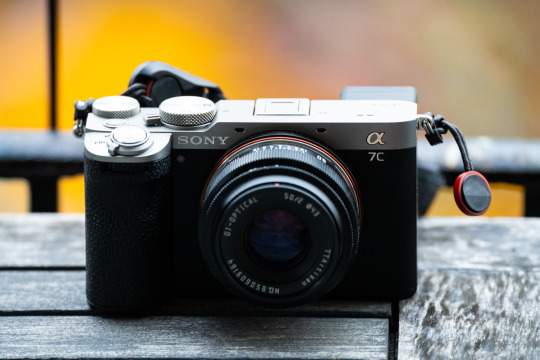
PROS:
The A7C was already one of my favorite cameras of all time and this improves on it a lot more than I thought when just seeing the specs. The added front dial alone makes it many times easier to control than the older model, and lets me use my typical Sony setup that I’ve grown accustomed to (aperture on front dial, shutter speed on rear dial, and ISO on the scroll wheel).
This is the quickest operating Sony camera I’ve owned. I think they kind of lulled me into forgetting how fast cameras can be going from off to on and taking photos. The A7RII was slow as heck with each subsequent model I’ve owned getting faster and faster (A7III to A7C to A7RIV). This new Sony is at a level of speed that makes it hard to go back to using the A7RIV which I still own (for now).
The autofocus is superb. I still haven’t really put it through its paces since I got the camera in the winter and the lack of light plus uncooperative weather has made it tricky to go out and shoot, but from what I have shot it’s nearly flawless. It’s way better than any camera I’ve owned before. It also has some really neat autofocusing modes, like the ability to focus on the eyes of birds. I’m not really around birds close up all that often but it worked really well at an exotic bird place in Jersey I went to recently.
The camera is 33 megapixels, which is a nice compromise between feeling like it’s sometimes too much (61) or too little (24).
The in-body image stabilization is really good. It’s certainly the best I’ve used in any camera so far…although to be fair I’ve never used a Nikon/Canon/Fuji/Olympus body with IBIS, only Ricoh (GRIII), Panasonic (GX7 and GX85), and Sony.
It can lower the shutter when switching lenses so dust doesn’t get in there. Not gonna lie it seems kind of dangerous and something that could potentially damage the shutter, but so far it’s kept the dust out.
CONS:
The viewfinder isn’t great. I’ve never really been an EVF snob since I’ve been shooting on mirrorless EVFs for over a decade now (I had a V1 back in 2013), but going from the A7RIV to this makes it kind of stick out. I also recently handled an A7RV, which really blows it out the water. With autofocus lenses it’s no problem, but using manual focus lenses is more difficult. On the plus side, it automatically goes into peaking mode when you manually focus, even when using adapted lenses or lenses without electrical contacts.
The camera only has one card slot. Not a huge dealbreaker considering every other camera I own aside from my A7RIV is the same in that regard. A second slot even if it was a micro would have been great though. A nice thing about the A7RIV is that I’ve never left home without a memory card because even if I forget one there’s always another in there.
No joystick. Again, not completely necessary but it’s nice to have. Most of my subjects aren’t humans (or animals, or other things that the camera can instinctively detect) so there are plenty of times I want to position the focus point myself.
Slow flash sync and shutter speed. This camera is like the A7C before it in that it only flash syncs up to 1/160. It also only shoots up to 1/4000.
Still don't love the flip screen because it makes quick waist-level shooting a pain in the ass. I wish they went with the A7RV style screen.
Speaking of, all the new perks on this camera make me want to use it a ton more than my A7RIV, but it also makes me want to get an A7RV. Maybe I'll sell my X100V since the prices are nuts right now...
SAMPLE PHOTOS:

Sony 85mm f/1.8 | ISO: 250, f/2.8, 1/125 sec

Sony Zeiss 55mm f/1.8 | ISO 100, f/1.8, 1/160 sec
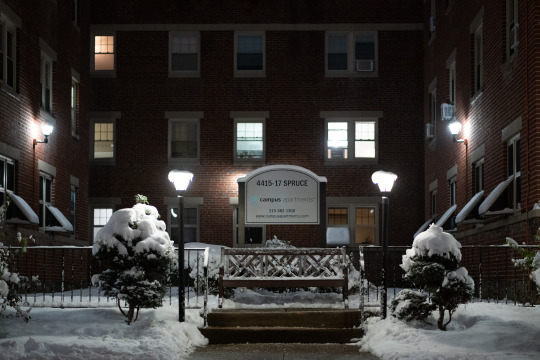
Sony 85mm f/1.8 | ISO 5000, f/1.8, 1/50 sec

Tamron 20-40mm f/2.8 @ 20mm | ISO 3200, f/2.8, 1/125 sec
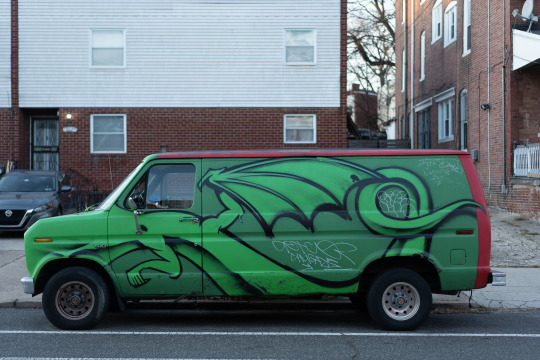
Sony Zeiss 55mm f/1.8 | ISO 100, f/2, 1/160 sec

Sony Zeiss 55mm f/1.8 | ISO 12800, f/2, 1/50 sec

Sony Zeiss 55mm f/1.8 | ISO 100, f/2.2, 1/640 sec
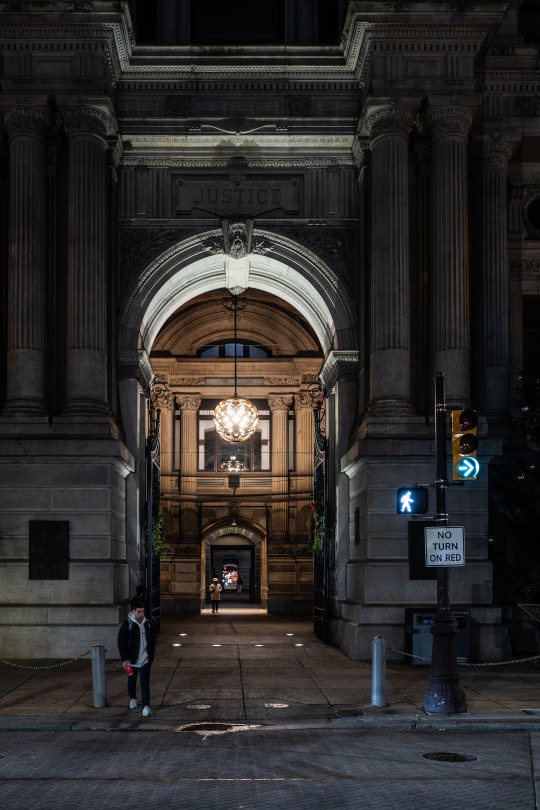
Tamron 20-40mm f/2.8 @ 32mm | ISO 320, f/2.8, 1/20 sec

Sony Zeiss 55mm f/1.8 | ISO 100, f/1.8, 1/500 sec

Tamron 20-40mm f/2.8 @ 37mm | ISO 800, f/2.8, 1/40 sec
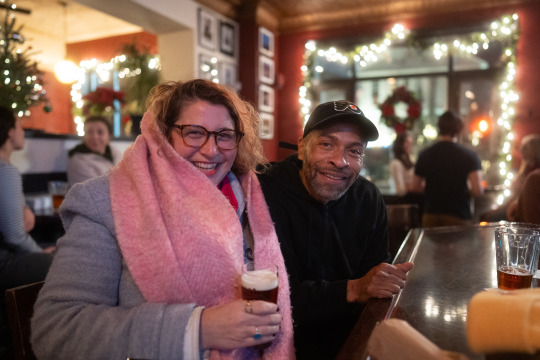
Sony 24mm f/1.4 GM w/ K&F Concept Black Diffusion 1/4 Filter | ISO 8000, f/1.4, 1/50 sec

Sony Zeiss 55mm f/1.8 | ISO 250, f/1.8, 1/125 sec

Sony Zeiss 55mm f/1.8 | ISO 250, f/2, 1/125 sec
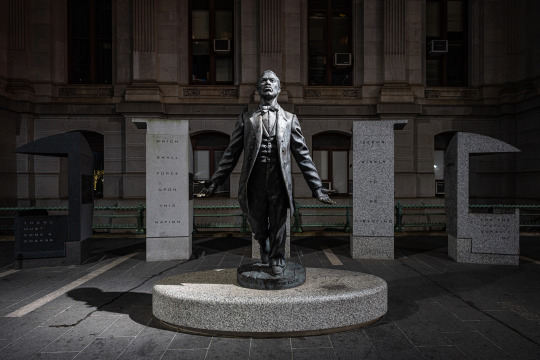
Tamron 20-40mm f/2.8 @ 20mm | ISO 400, f/2.8, 1/40 sec
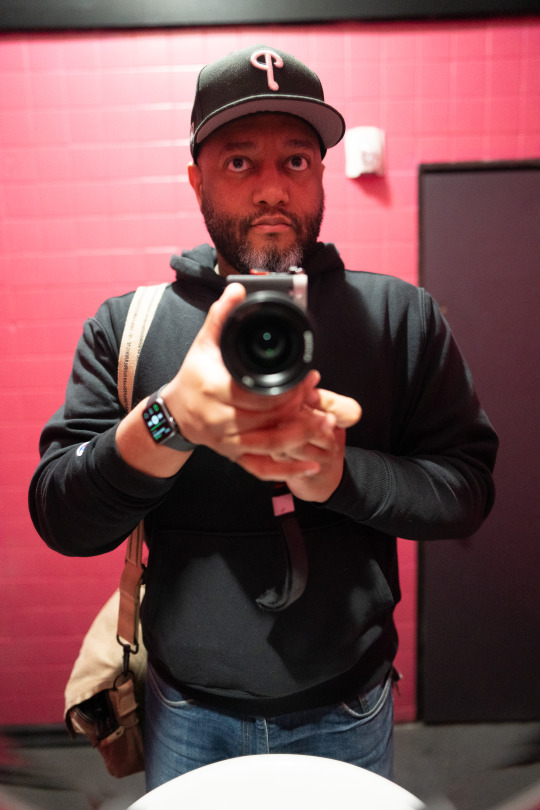
Sony 24mm f/1.4 GM | ISO 8000, f/1.6, 1/50 sec
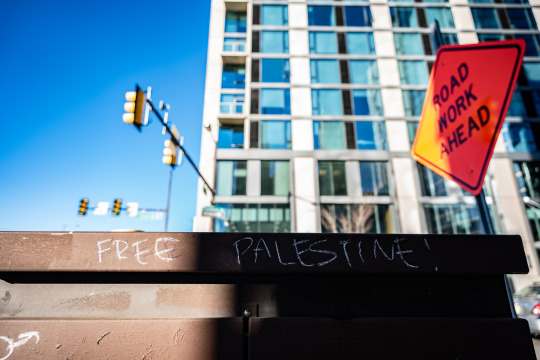
Tamron 20-40mm f/2.8 @ 20mm | ISO 100, f/2.8, 1/320 sec
9 notes
·
View notes
Text
Pentax 645Z Review
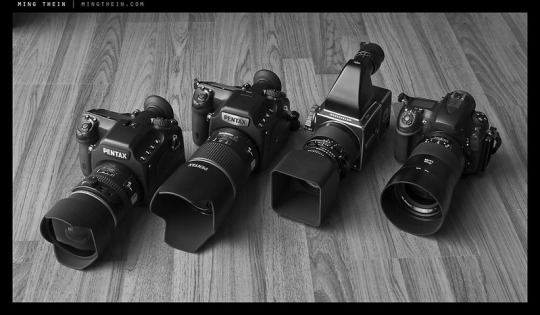
Medium-format cameras offer truly spectacular resolution, but until now, it's always come best camera alongside a difficult compromise. With the Pentax 645Z, that changes. Building on 2010's 645D, the Pentax 645Z offers features that are rare or in some cases unique in a medium-format camera. Pick up its weather-sealed body, and you'll find both live view and video capture on offer, not to mention an extremely wide sensitivity range, 27-point phase-detect autofocus system -- and compared to rivals, very swift performance too! And of course, you'll get the incredible detail-gathering capability of medium-format, plus a really big, bright viewfinder. Is it time you considered moving up from full-frame? Read on and find out!
Pros Phenomenal resolution and detail; Great high ISO performance; Rugged, weather-sealed body; Huge, bright viewfinder; Fast autofocus works well in low light; Swift performance for a medium-format camera; Good battery life; Shoots Full HD video
Cons Quite bulky compared to an APS-C or full-frame DSLR; Autofocus points clustered near center of frame; Most lenses aren't weather-sealed or optimized for digital; Prone to aliasing artifacts (but so are most high-end cameras these days); Attracts a lot of attention from passers-by
Price and availability Available since June 2014, the Pentax 645Z is priced at US$8,500 body-only.
Back in early 2010, Pentax launched the 645D, a medium-format digital SLR that it had been developing for the previous five years. It might have been a long time coming, but it was nonetheless exciting for it. The 645D leapfrogged rivals Canon, Nikon and Sony with two-thirds greater sensor area than a full-frame sensor, yielding a unique look and shallower depth of field. At the same time, it was vastly more affordable than offerings from medium-format makers like Hasselblad and Phase One, yet rugged enough to be used in the field.
Pentax 645Z Review -- Front view with lens The reason Pentax -- since taken over by Ricoh -- could offer its camera at a more attractive price-point than other medium-format products was pretty simple. Much of the design work for the 645D could be shared with the company's mass market, APS-C DSLRs, where Hasselblad and Phase One -- neither of which sells consumer SLRs -- had to bear the entire cost of development solely with their medium format products.
While Pentax lacked (and indeed, still lacks) a full-frame DSLR, the 645D served both as an aspirational model for the enthusiasts to look up to, and as something genuinely different to attract pros for whom that resolution and medium-format look was more important than high-speed capture. And boy, did it ever offer a lot of resolution by 2010 standards. (In fact, it's only recently that we've started to see cameras with smaller sensors catching up.) When we first put the 645D in our lab, we were amazed to find that it picked up details we'd never even noticed in our test scenes -- details that we couldn't even see with our own eyes, until we pulled out a magnifying glass to confirm them.
Pentax 645Z Review -- Weather seals Just like the medium-format film cameras in whose footsteps it followed, the 645D was never going to be a mass-market camera. Medium-format is an even smaller niche than it was in the film days, but the 645D was nonetheless a very important camera for the company, and its followup -- the Pentax 645Z -- is no less important.
Just like its predecessor, the Pentax 645Z shares much with Ricoh's flagship APS-C DSLRs -- and with four years of development having taken place on the APS-C front since the 645D was launched, there was no shortage of new features for it to inherit. But the most important feature of them all is at its very heart, a brand-new, Sony-sourced 51-megapixel CMOS image sensor. It's coupled to a PRIME III image processor, as first seen in the K-3, and the 645Z also inherits that camera's 27-point SAFOX 11 autofocus and 86,000 pixel RGB metering systems.
The 645Z's new image sensor allows a spectacularly wide sensitivity range, especially by medium-format camera standards, covering everything up to ISO 204,800 equivalent. It also provides both live view and Full HD movie capture capabilities, neither of which its predecessor was capable of. And performance has taken a big step forwards, at least compared to other medium-format cameras. This still isn't a sports shooter, but it'll shoot at almost triple the speed of the 645D. You'll also be able to review photos post-capture in less than half the time.
2 notes
·
View notes
Text
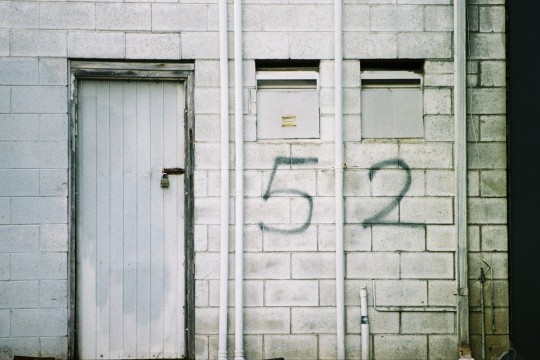
52
Sky Edwards
Ricoh Singlex
Meyer Optik Gorlitz Orestor 135mm 1:2.8
Kodak Pro Image 100
2024
#urban photography#photography#ricoh#meyer optik#filn photography#vintage photography#belmont#perth#skydarcyedwards#film#kodak pro image 100#kodak
15 notes
·
View notes
Note
hello!! could i perhaps request names centered around cameras and pictures please?? thank you in advance ^_^
Sure thing!
Pola (Polaroid)
Polo
Kodak
Nikon
Niko/Nico
Ricoh
Rico
Chroma
Flash
Pixel
Image/Imogen
Olympus
#neutral names#feminine names#masculine names#name inspiration#name ideas#name suggestions#camera names#picture names
3 notes
·
View notes
Text


Testing out the Ricoh R10. Images by Adriana Damian.
#photographers on tumblr#original photographers#black and white#bnwphotography#black cat#ricoh#ricohr10#point and shoot#vintage digital camera#artists on tumblr
12 notes
·
View notes
Text



Vorstadt Vi
The city is impossible, that is the first thought that any newcomer has. They are all correct. No sky should have so many moons, nor so few suns. Still, you will be glad for its shelter.
The possible things beyond its walls are hungry and unceasing.
The image(s) above in this post were made using an autogenerated prompt and/or have not been modified/iterated extensively. As such, they do not meet the minimum expression threshold, and are in the public domain. Prompt under the fold.
Prompt: a city built from buildings with various forms of art hanging, in the style of digital neo-expressionism, qajar art, photo montage, illuminated visions, ricoh r1, terraced cityscapes, multidimensional abstracts:: a towering city made of giant fungus made of basalt, surreal landscape art, by René Magritte, Jack Kirby and Carl Updike, starry night sky with strange nebulas, lights like dying embers, 5k
#unreality#midjourney v6#generative art#ai artwork#public domain art#public domain#free art#auto-generated prompt#landscape#ai landscapes
13 notes
·
View notes
Text
A little sad....
So, I think most photographers/creatives/imagists (I prefer the latter), who care about their work have probablt gone through what I am now dealing with. It certainly has made me a bit sad. I have discovered that I have lost nearly all the original and RAW images that I made over a about a two year perios from 2020-2021. Any images ptrviously edited or published have been preserbed, but many many untouched images have been lost. I estimate as many2 to 4 thousand.
I do realize that its not the end of the world and amounts to spilled milk in the larger scheme of things, however I did do some extensive travel with China suring that period. I was stuck here because of covid! The country is thankfully open again, however, some of those unedited, unpublished images felt pretty special to me! Moreover, the loss was basically due to my own negligence (and some complex logistic issues that aren't worh sharing). Simply put, I thought I had a backup when I recently deleted this stuff, but didn't. I suppose its good I can't blame anyone, but am left feeling a bit blue.
So, this really being my photography blog, I am going to list here for posterity's sake what has been lost. I will also treat it as a rather harsh lesson learned! :'(
Btw, I beg your indulgence... You don't need to read all this! hehehe
Lost images:
----------------------------------------------------------------------------
China Hebei 2021 �� Phone photos
Reason: Lost phone when drunk in late 2021.
--------------------------------------------------------------------------
Chin Beijing 2021 - All original and raw files lost. More than 400 edited photos survive. Losses include Badaling and Mutianyu with Liezal. Also Summer Palace and Old Summer palace and Imperial with Liezal. Also Ossies music videos (some are on FB). Portfolio pics survive (about 425). Pics of Haidian temple with kids playing survive. Some Ricoh pics as well.
Reason: Preservation Negligence in 2021
-------------------------------------------------------------------------------
China Hebei 2021 – (Jingshanling) – about 33 D750 photos survive in raw. All hp pics gone. 20 Portfolo pics survive.
Reasons: Preservation negligence and lost phone when drunk
China Hunan 2021 (Zhangjiajie)
All original photos lost. 110 portfolio pics survive.
Reasons: Preservation negligence.
-----------------------------------------------------------------------------------------------------------------------
China Tibet 2021
354 original Nikon D750. Mostly Mt. Everest. 132 portfolio pics survive.
All phone pic originals lost. All photos in Lhasa and eastern Tibet lost.
Reasons: Preservation negligence.
-------------------------------------------------------------
China Inner Mongolia 2021
Samsung S21 Photos preserved. 47 portfolio pics persrved.
All Nikon originals lost.
Reason: Preservation negligence.
------------------------------------------------------
China Gansu 2021
Lanzhou:
Total loss of all original pics
------------------------------------------------------------------------------
China Qinghai 2021
Total loss of all original photos
20 portfolio pics presererved
------------------------------------------------------------------------------------------------------------------------------------------ China Guizhou 2020
Total loss of all original photos
23 portfolio pics preserved
Reason: preservation negligence
----------------------------------------------------------
China Dandong and North Korea 2021
Total loss of all original photos except some SCOS pics.
55 portfolio pics preserved
Reason: negligence on my part
--------------------------------------------------
China Shanghai and Hangzhou 2020
All original photos lost.
80 portfolio pics still exist ------------------------------------------------------------
5 notes
·
View notes